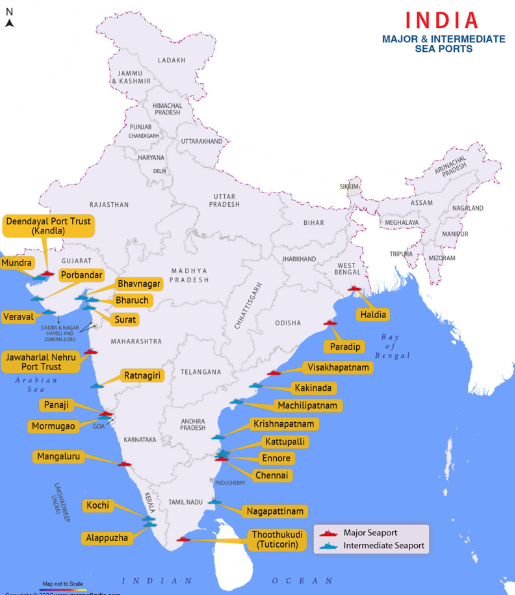7667766266
enquiry@shankarias.in
In a recent proposal Government looks to reduce red tape and reduce port infrastructure delays.
In 2023-24, major ports handled 721 million tonne (mt) of cargo, marking an 11.8 per cent growth year-on-year, while non-major ports handled 817 mt, growing by 4.4 per cent.

|
Legislations governing ports in India |
Other initiatives
|
|
Quick facts |
|
Ports in India are categorized based on their administration, cargo handling capabilities, location, and functions.
|
Business Standard |Government Proposal to Increase Port Autonomy